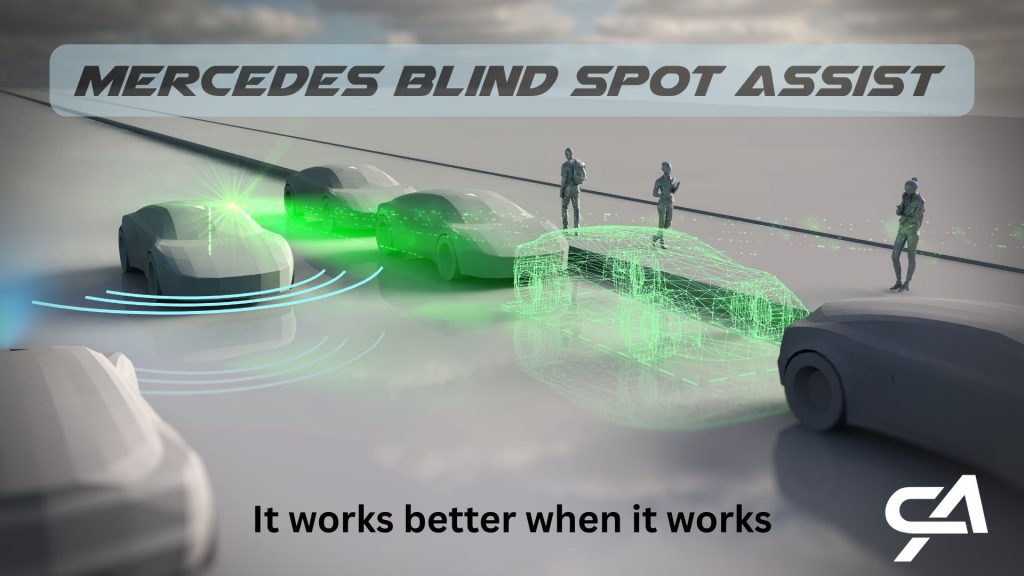When Your Mercedes Says “Blind Spot Assist Inoperative”: What It Means—and What Comes Next
You’re merging onto the Henday, checking your mirrors, and that familiar glow in the corner of your side mirror isn’t there. Then you glance down: “Blind Spot Assist Inoperative.”
It’s not a catastrophic failure—but it’s one of those moments that makes you pause.
If you drive a Mercedes-Benz, you already know how seamlessly the safety systems integrate into the driving experience. And when something like Blind Spot Assist stops working, it’s not just inconvenient—it’s unsettling.
Understanding the System
Blind Spot Assist (BSA) isn’t just a fancy feature. It’s radar-based tech designed to look where you can’t—alerting you to vehicles in your blind spots during lane changes. It doesn’t replace your mirrors, but it enhances them. When it’s working, you don’t notice it. When it isn’t, you notice everything.
Why It Might Stop Working
We see these systems in the shop fairly often, and while they’re built to be durable, there are a few common culprits behind BSA failures:
- Seasonal grime or slush covering the sensors
- Minor bumper impacts that knock the sensors out of alignment
- Wiring corrosion, especially after a few harsh winters
- Software hiccups, often after a battery replacement or module reset
These have one thing in common: They’re not always obvious, and they’re not always solved by cleaning off the bumper.
Diagnosing It Properly Matters
A warning like this could mean a simple fix… or the start of a more complex issue within the vehicle’s network of safety systems. That’s why proper diagnostics matter.
There’s no “universal answer” here. It takes the right tools, up-to-date software, and an understanding of how Mercedes-Benz systems interact to trace the issue correctly. We take that seriously—not because it’s flashy, but because it’s how we’ve built trust over the last two decades.
The Real Risk? Getting Used to the Warning
When a safety feature like BSA stops working, it’s easy to shrug it off. You know how to shoulder-check. You’ve driven without it before.
But here’s the thing: driver-assist systems are layered. They’re designed to help when you’re tired, distracted, or when someone else makes a sudden move. They’re not just there for convenience—they’re backup for when your instincts aren’t enough. And when one piece fails, it can be the canary in the coal mine for others.
What Mercedes Drivers Should Know
If your vehicle is warning you that something’s wrong—even if it still drives just fine—listen to it.
Bring it to someone who understands these systems because doing so is the best way to keep your vehicle performing as it was engineered to—quietly, seamlessly, and safely.
We’re here when you’re ready.

